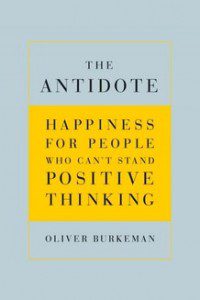 Tim Krieder wrote an opinion in a recent New York Times Sunday Review (17 November 2012) called the Quiet Ones about the Quiet Car on Amtrack. His observations are prescient. We have lost quiet in our world and we have also lost the civility that supports quiet.
Tim Krieder wrote an opinion in a recent New York Times Sunday Review (17 November 2012) called the Quiet Ones about the Quiet Car on Amtrack. His observations are prescient. We have lost quiet in our world and we have also lost the civility that supports quiet.
He notes how one individual puts her phone to her ear as soon as she sits down on the train as if she were “unable to bear an undistracted instant in her own company.” What happens to us when we have no place of quiet in our lives? No place where we are unplugged from our connective technology, no place where our minds stop going in the ways they are accustomed to going?
Krieder laments, “Respecting shared public space is becoming as quaintly archaic as tipping your hat to a lady, now that the concept of public space is as nearly extinct as hats, and ladies.” The problem has troubling roots in changes in society that may be born of this connective technology. “I suspect in part because people now spend so much time in the solipsist’s paradise of the Internet that they carry its illusion of invisible (and inaudible) omniscience back with them out into the real world.”
I observe this in the movie theater sometimes. It appears that people think they are in their living room watching a DVD, oblivious to the impact they are having on others. I think he is right, solipsism (that is, self-preoccupation) is the culprit.
How can mindfulness help? It is interesting that there is a growing counter-trend to noise pollution in the mindfulness “revolution”. There is, perhaps, a growing hunger for some place of quiet–without and within.
I see the “holy trinity” of mindfulness as silence-containment-engagement. It helps to bring some sense of silence into our lives. It helps to contain emotional and appetitive impulses while at the same time engaging us more with what we are doing.
Mindfulness meditation creates a relative quiet. We have a quiescence of activity. We are just sitting or just walking slowly. For a few minutes, we give up the noisiness, bustle, and commotion of doing things.
Of course, we can have this activity quiescence while our minds keep chattering away, talking, planning, opinionating. Yet, we can also have the opportunity for moments of quiet. The mind shuts up. Goes silent. Stops, even if just for a second. When that quiet was complete, a previously unexperienced world of experience is revealed. The Buddha called this nirvana.
Quiet is relative and selective. We hear sounds of nature, sounds of our bodies and might include these in “quiet.” What is considered bothersome noise for one is not for another. What is noise for you? For me, television noise is most distracting.
Absolute silence is never happening unless we are in a sound-absorbing room. There is a lab in Minnesota that has an Anechoic Chamber–the quietest room in the world. Apparenlty the silence is so intense no one has been able to stay inside of it for more than forty-five minutes. We are used to some sounds, many sounds, and now without any sense of quietude in our lives, I can readily imagine how being in this room of resolute silence can be disturbing. I’d like to try it.
Silence and quiet are values. It does not appear that they are cultural norms. We have the “uncomfortable silence” instead of the “welcome silence.” We are generally oblivious to how loud we and our environment s are. I wonder why people talk louder when they are on their cell phones than if they were talking to the person walking next to them. Every day I hear people having loud conversations on their phones as they walk down the street. Actually, I only hear one half of the conversation. I admit that on occasion, I will walk and talk on my phone. When I do, I am mindful of my volume. In part to be courteous and in part to be private–I don’t really want people hearing my half of any conversation.
Mindfulness suggests the possibility and the skill that we can bear undistracted instances of our own company. We can allow things to become quiet in the relative way that they can be. We can investigate quiet, feel the richness of silence–touch its texture with attention. We can give ourselves the okay to investigate the quality of now with whatever sounds are present.
It is possible to meditate in a quiet, secluded meditation hall and in the midst of a crowded railway car. We are always investigating the landscape of now with openness, interest, and curiosity. Yet, it might be a revelation to bring some silence into your life by segregating yourself from cacophony for some extended time at a meditation retreat. When you return you might be able to find silence in the midst of bustle, noise, and the ceaseless doings of life.

